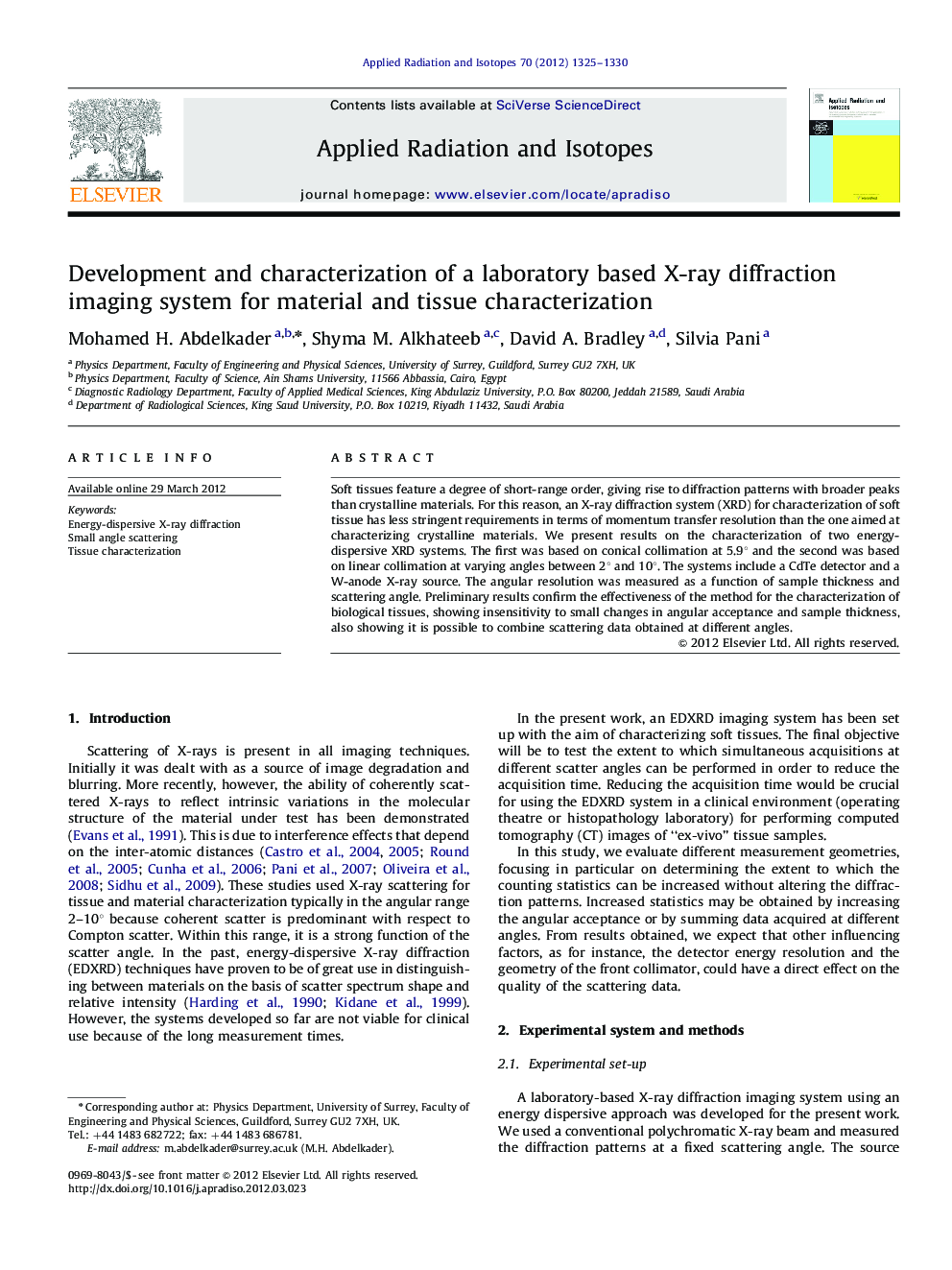| Article ID | Journal | Published Year | Pages | File Type |
|---|---|---|---|---|
| 1876162 | Applied Radiation and Isotopes | 2012 | 6 Pages |
Soft tissues feature a degree of short-range order, giving rise to diffraction patterns with broader peaks than crystalline materials. For this reason, an X-ray diffraction system (XRD) for characterization of soft tissue has less stringent requirements in terms of momentum transfer resolution than the one aimed at characterizing crystalline materials. We present results on the characterization of two energy-dispersive XRD systems. The first was based on conical collimation at 5.9° and the second was based on linear collimation at varying angles between 2° and 10°. The systems include a CdTe detector and a W-anode X-ray source. The angular resolution was measured as a function of sample thickness and scattering angle. Preliminary results confirm the effectiveness of the method for the characterization of biological tissues, showing insensitivity to small changes in angular acceptance and sample thickness, also showing it is possible to combine scattering data obtained at different angles.
► Energy-dispersive X-ray diffraction (EDXRD) imaging system set up to characterize soft tissues. ► Different geometries evaluated to determine the extent to which one can increase the statistics. ► Increasing the counting statistics can be done either by (a) increasing the angular acceptance or (b) by summing patterns acquired at different angles.
